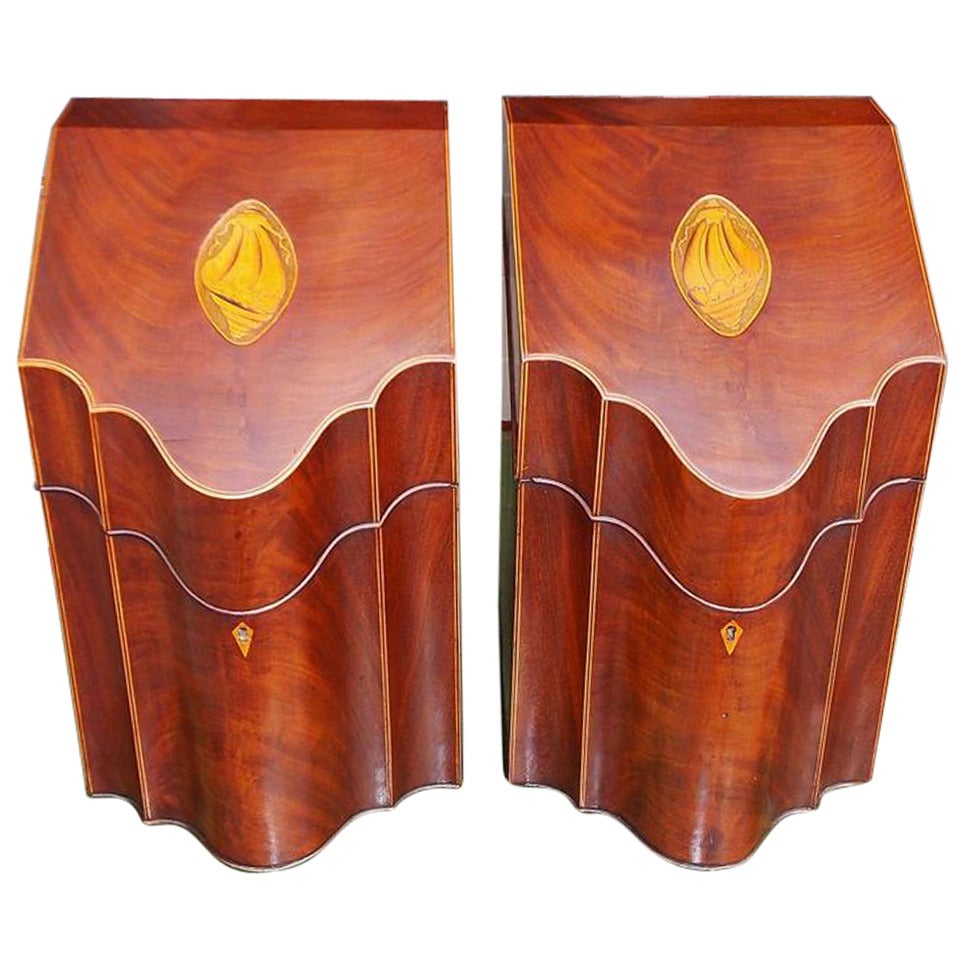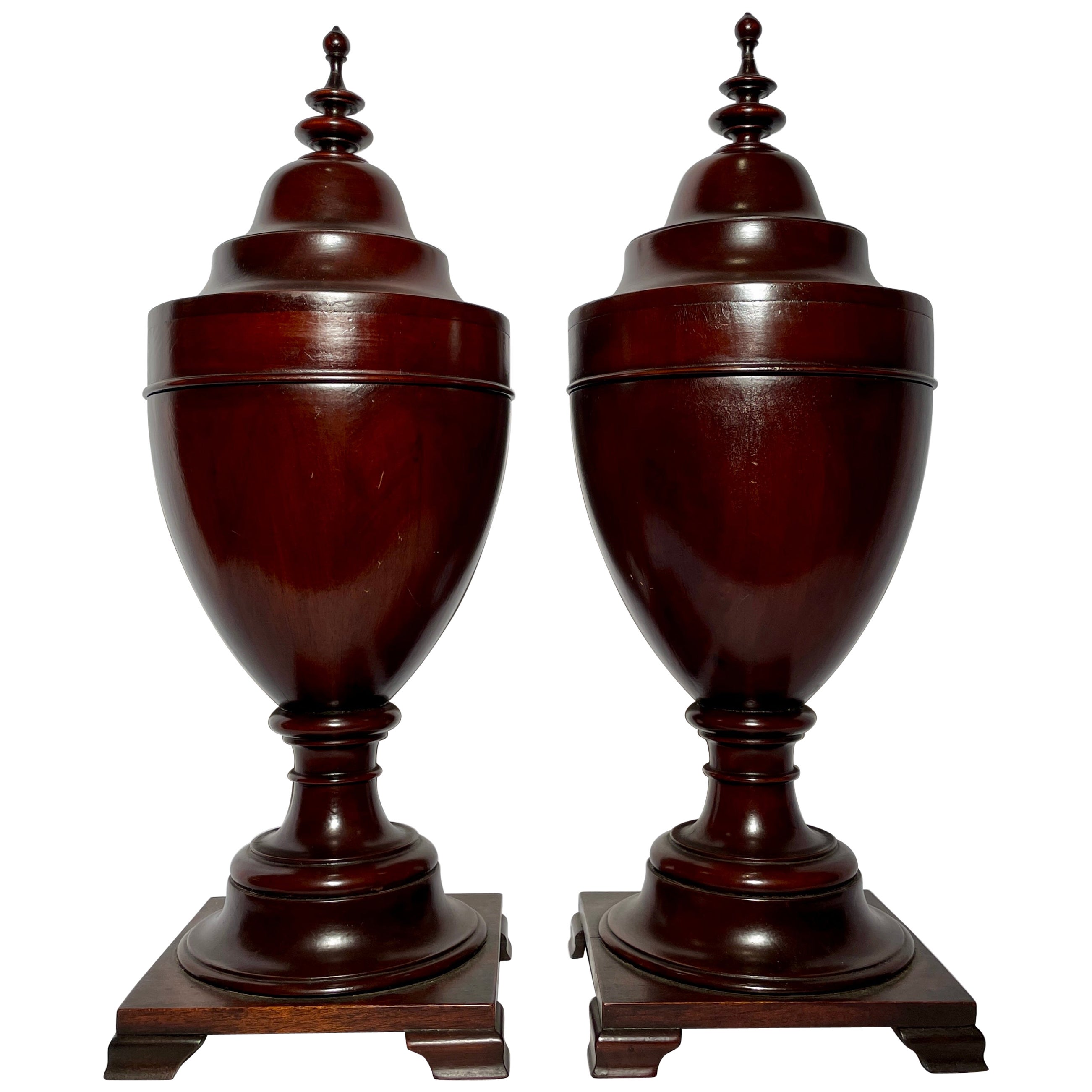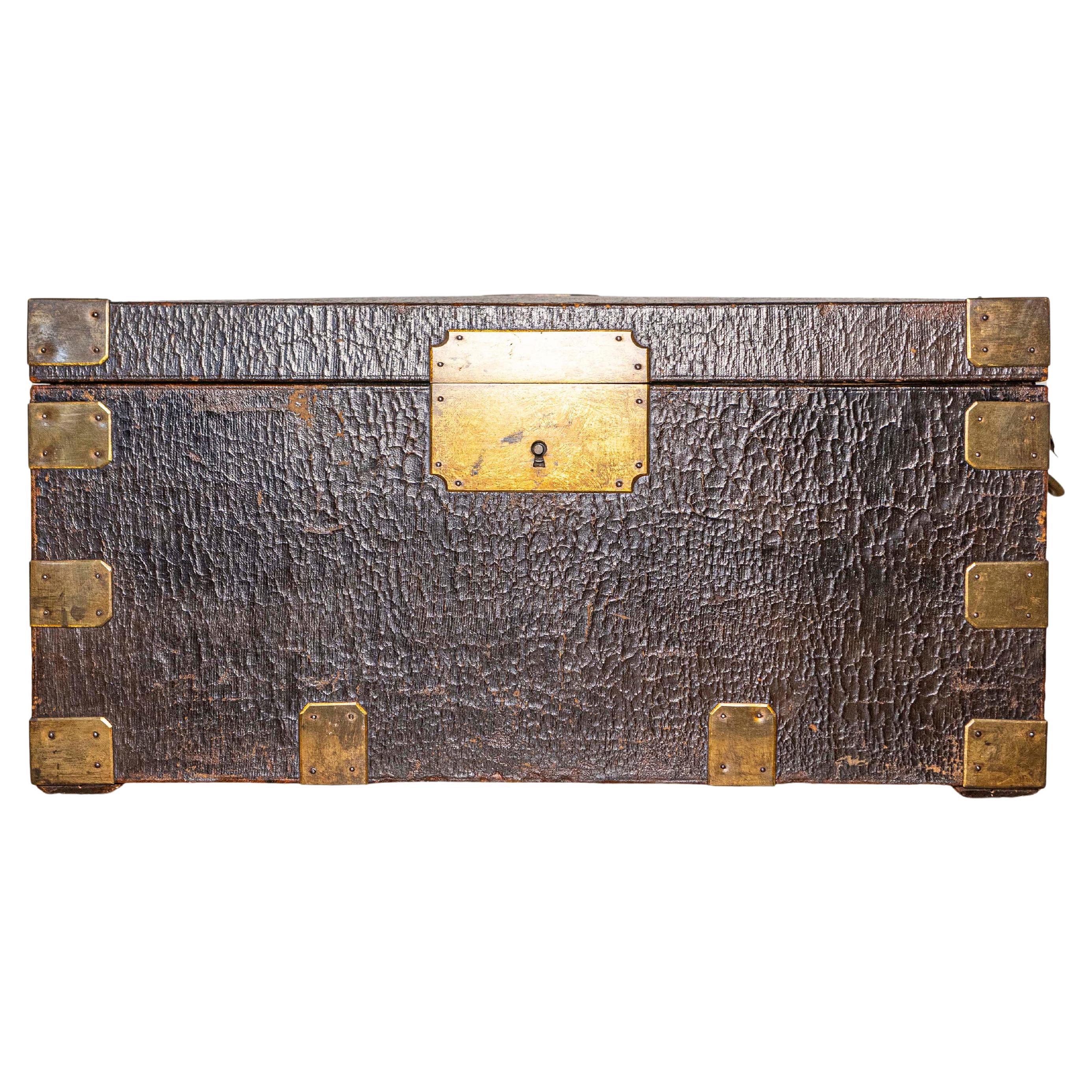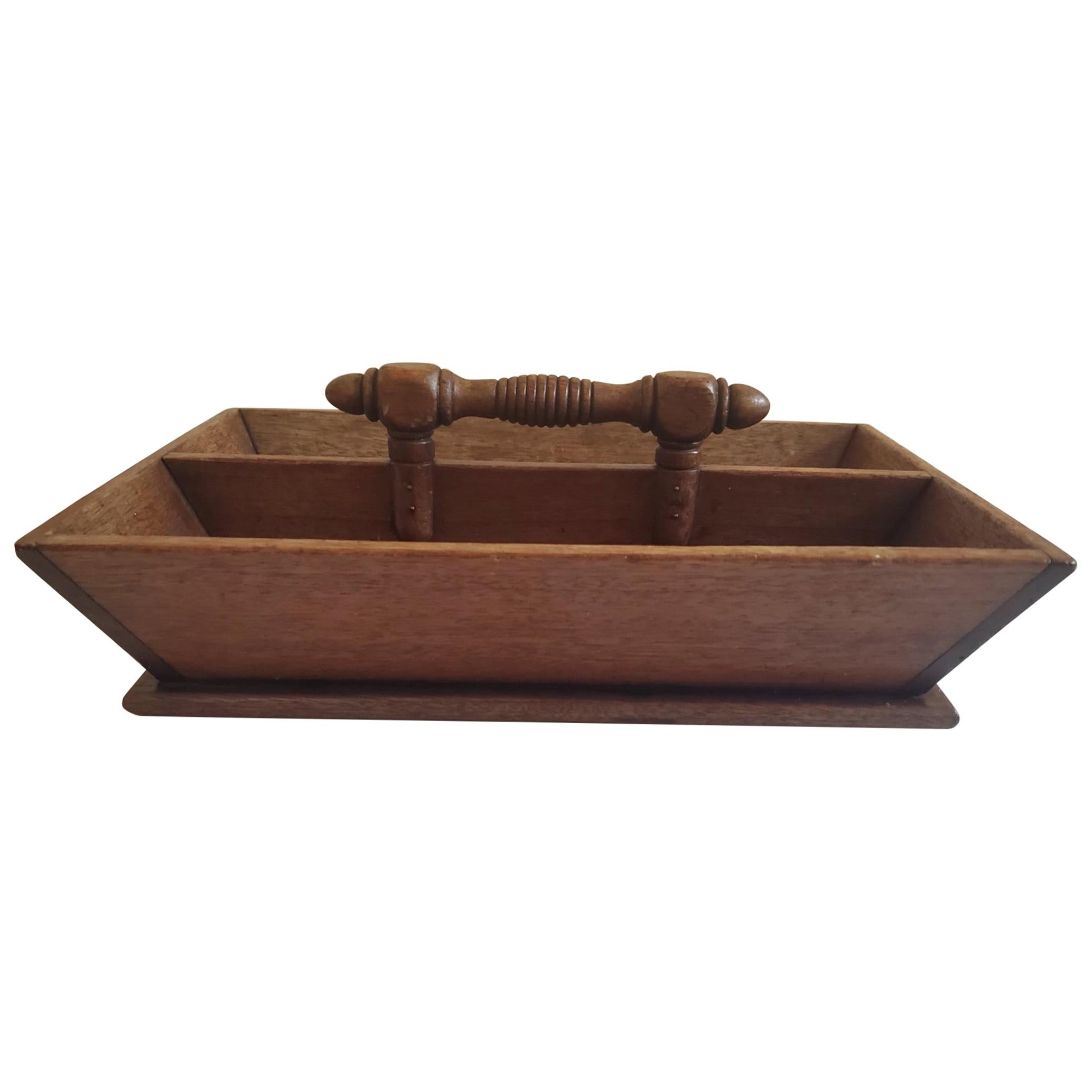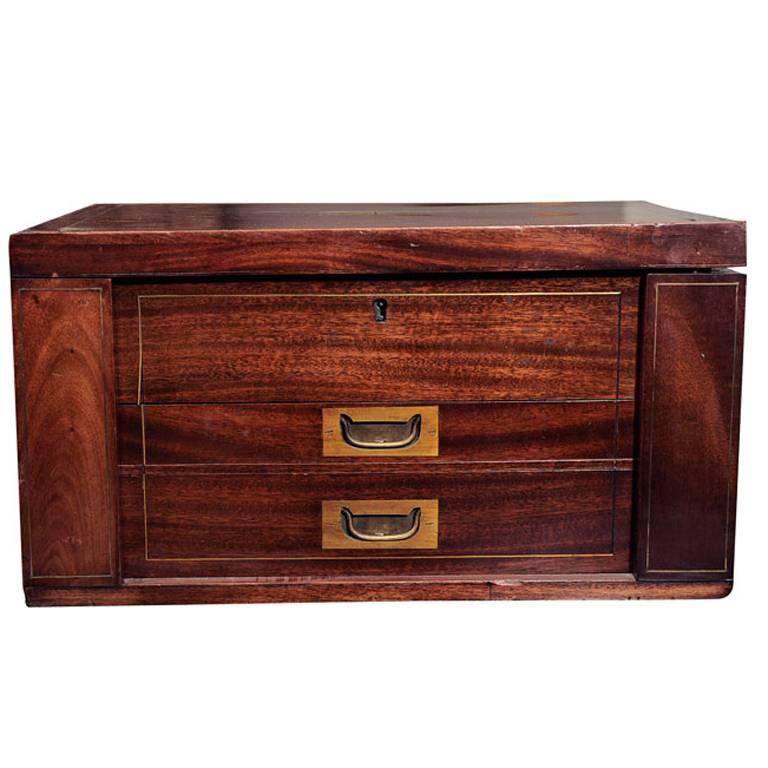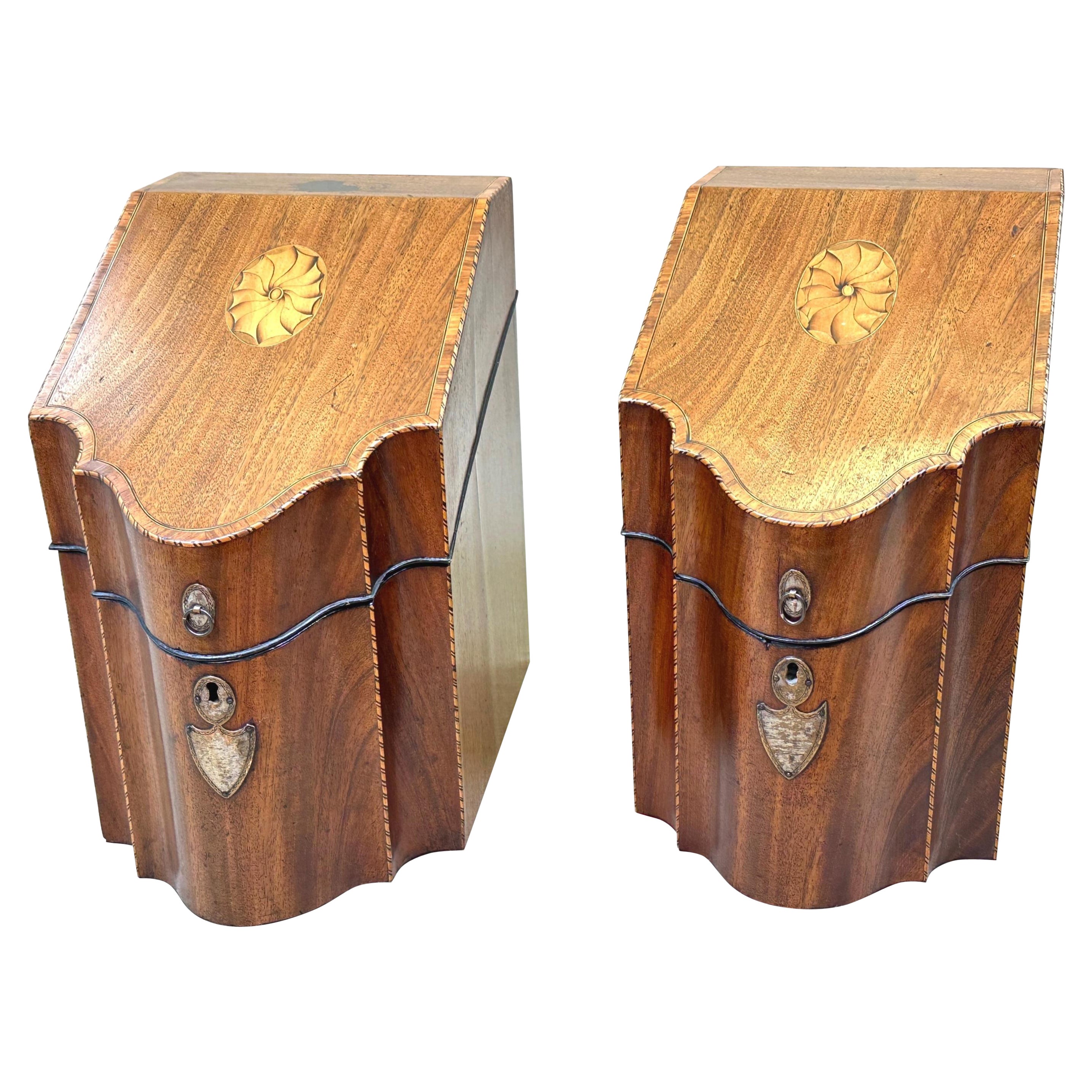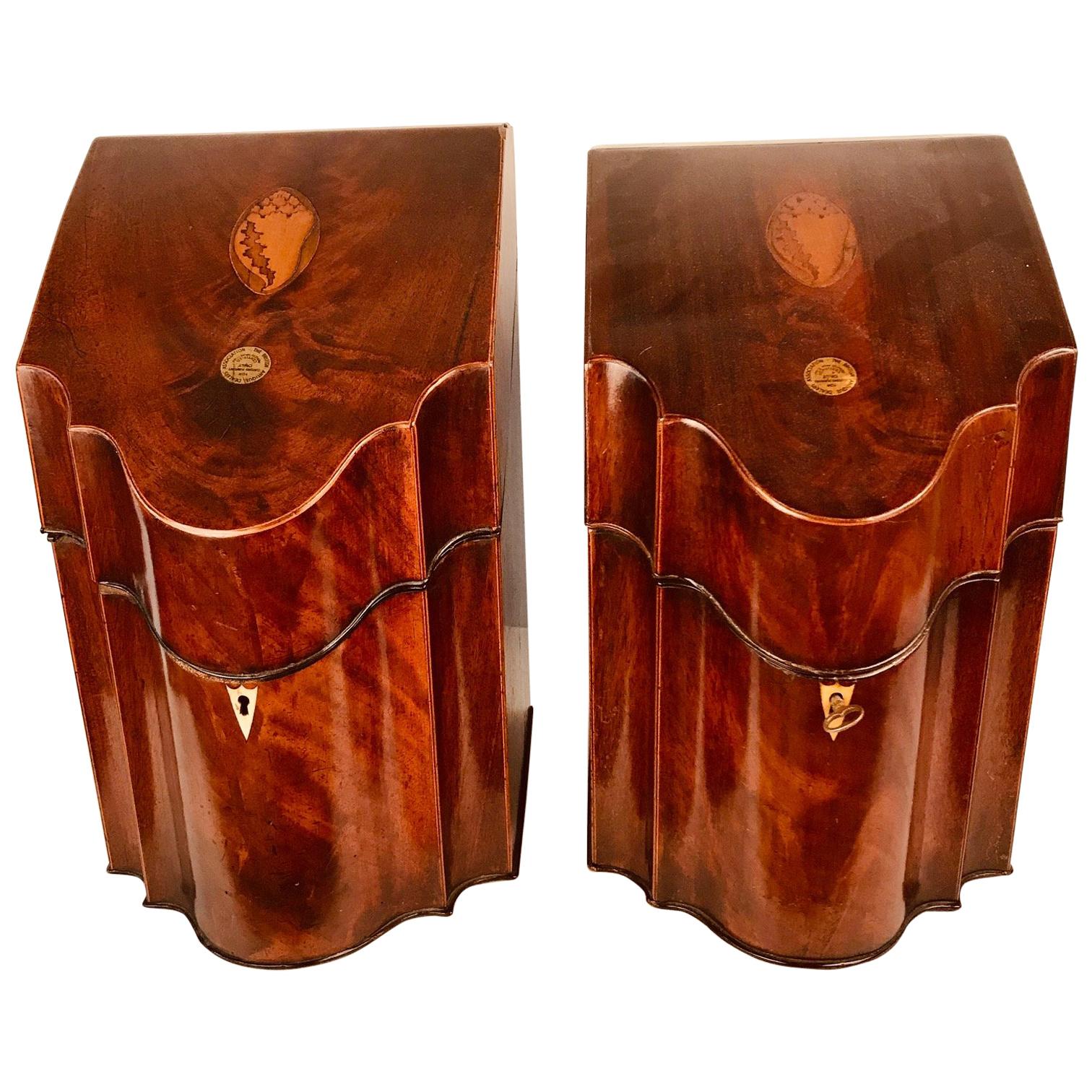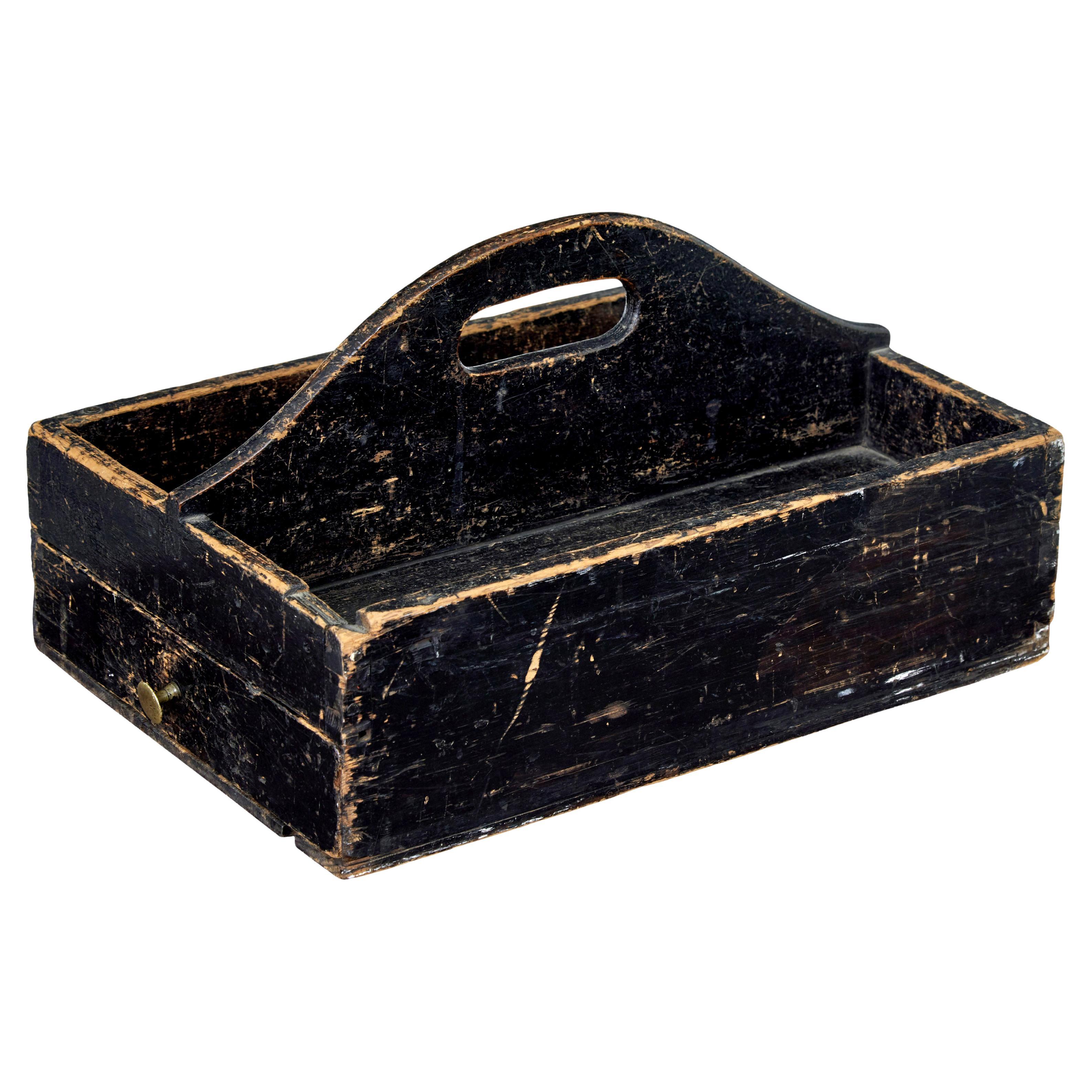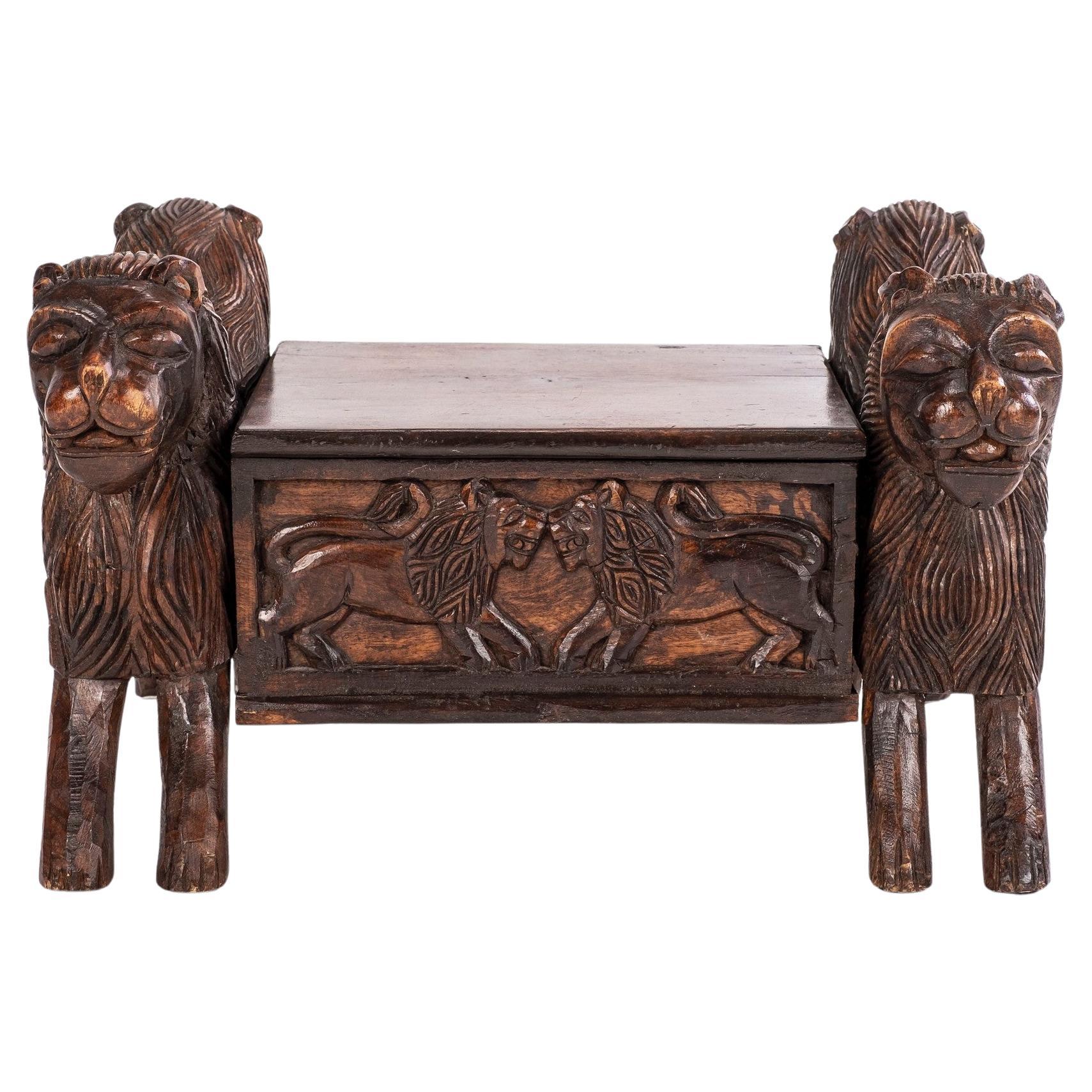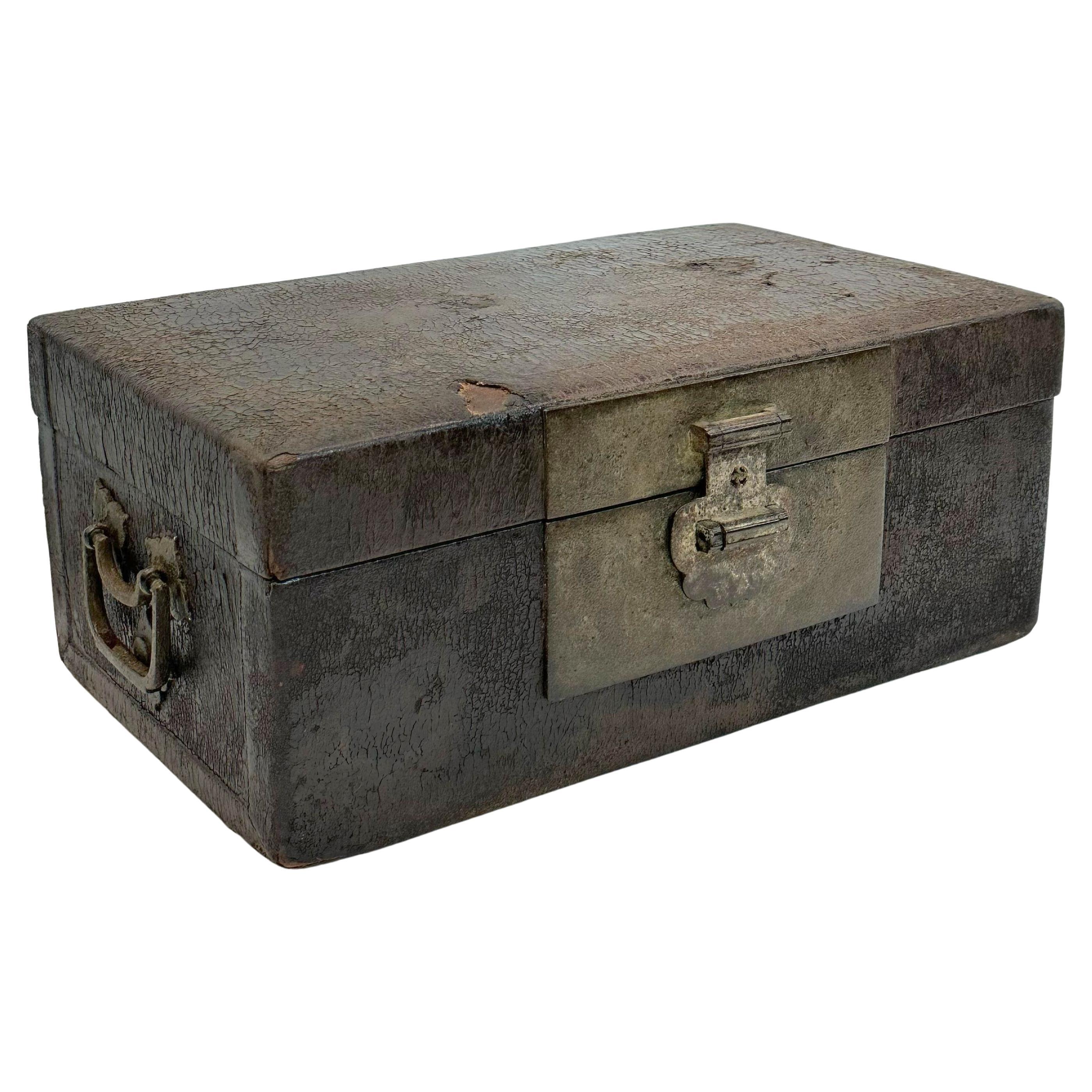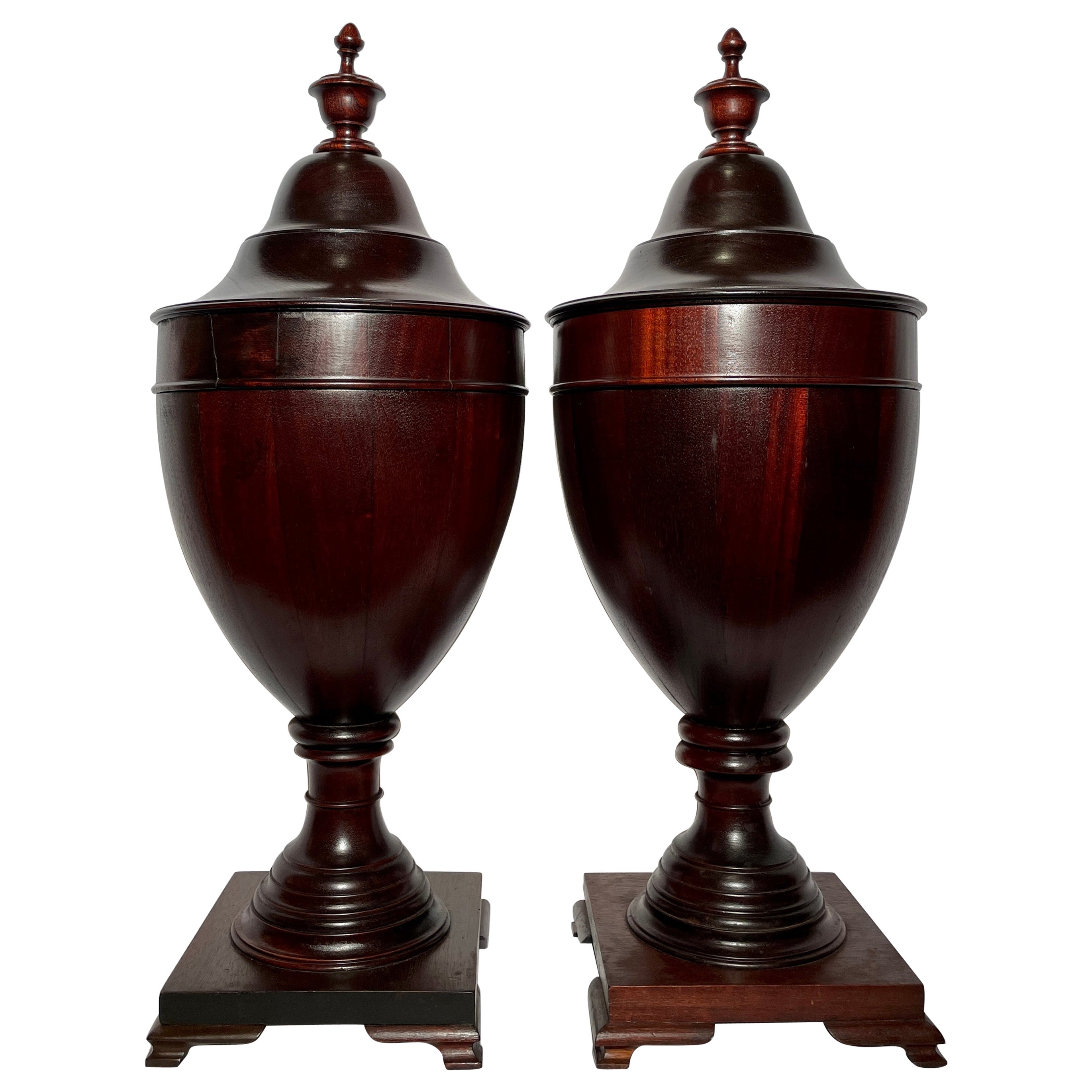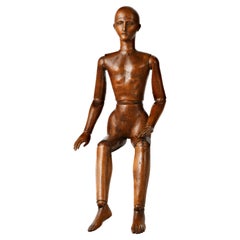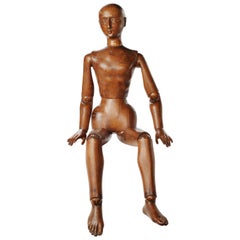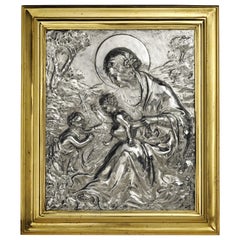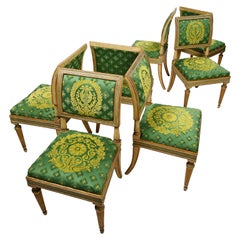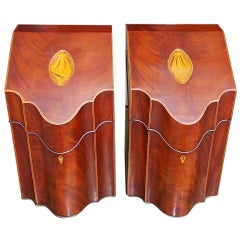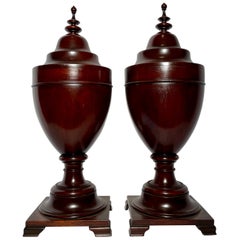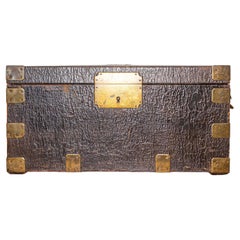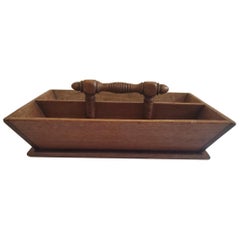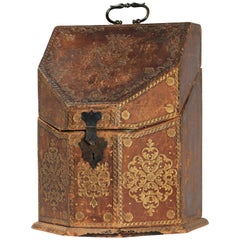
19th Century Northern Italy Wood and Leather Cutlery Box, circa 1870
View Similar Items
Video Loading
Want more images or videos?
Request additional images or videos from the seller
1 of 21
19th Century Northern Italy Wood and Leather Cutlery Box, circa 1870
About the Item
- Dimensions:Height: 11.62 in (29.5 cm)Width: 9.06 in (23 cm)Depth: 8.08 in (20.5 cm)
- Style:Other (Of the Period)
- Materials and Techniques:
- Place of Origin:
- Period:
- Date of Manufacture:circa 1870
- Condition:Minor losses. Minor fading. Some consumption of the leather in the lower part of the box. The interior has probably been altered.
- Seller Location:Milano, IT
- Reference Number:1stDibs: LU4352214925511
About the Seller
4.3
Vetted Professional Seller
Every seller passes strict standards for authenticity and reliability
Established in 1860
1stDibs seller since 2018
21 sales on 1stDibs
Associations
International Confederation of Art and Antique Dealers' Associations
Authenticity Guarantee
In the unlikely event there’s an issue with an item’s authenticity, contact us within 1 year for a full refund. DetailsMoney-Back Guarantee
If your item is not as described, is damaged in transit, or does not arrive, contact us within 7 days for a full refund. Details24-Hour Cancellation
You have a 24-hour grace period in which to reconsider your purchase, with no questions asked.Vetted Professional Sellers
Our world-class sellers must adhere to strict standards for service and quality, maintaining the integrity of our listings.Price-Match Guarantee
If you find that a seller listed the same item for a lower price elsewhere, we’ll match it.Trusted Global Delivery
Our best-in-class carrier network provides specialized shipping options worldwide, including custom delivery.More From This Seller
View All19th Century Italian Wood Mannequin, Circa 1870-1880
Located in Milano, IT
Mannequin
Sculpted and carved wood
Italy or France, second half of the 19th century.
It measures 25.59 x 6.29 x 3.54 in (65.5 x 16 x 9 cm)
It weighs 2.2 lb circa (1 kg circa)
St...
Category
Antique 1870s Italian Other Figurative Sculptures
Materials
Wood
Late 19th Century Italian Wood Mannequin, circa 1880
Located in Milano, IT
Atelier mannequin
graven and carved stone pine wood
Italy, late 19th century
Measures: H 102 cm x 25 cm x 14 cm
H 40.15 in x 9.84 in x 5.51 in
Weight: circa kg 4
State of conse...
Category
Antique 1880s Italian Other Figurative Sculptures
Materials
Wood
19th Century Italian Sterling Silver Madonna, circa 1830
Located in Milano, IT
Embossed and engraved silver plaque
La Madonna del lago (The Madonna of the Lake)
Probably Milan, post 1824
Brass frame
It measures 16.14 in x 13.85 in (41 x 35.2 cm) and it weighs 10.357 pounds (4.698 g): silver 1.31 pounds (598 g) + brass 9.03 pounds (4.100 g)
State of conservation: some abrasions on the bottom. The frame is old, but not original.
The plaque is made up of a sheet of embossed and engraved silver, and held in a solid brass frame. It depicts the “Madonna del lago” – “Madonna of the Lake” - (the Madonna with Child and San Giovannino) by Marco d'Oggiono (Oggiono, 1474 circa - Milan, 1524 circa), while changing only the background landscape. Almost certainly the subject reproduced in the plaque was taken from a famous engraving by Giuseppe Longhi (Monza, 1766 - Milan, 1831), one of the greatest engravers of his era.
The silver is unmarked, probably because originally the Madonna was due to be exposed in a church: sometimes precious metals destined for worship and liturgical use would be exempted from payment and were, therefore, not marked.
It is very likely that the plaque was made in Milan because in this city in 1824 the engraving by Giuseppe Longhi was made and printed. In addition, in Milan, the alleged lost painting by Leonardo da Vinci in his Milanese period (1482-1500) would be produced; this is the painting from which Marco d'Oggiono took his version.
The painting
Marco d?Oggiono was one of Leonardo da Vinci's most brilliant students and collaborators (D. Sedini, Marco d’Oggiono, tradizione e rinnovamento in Lombardia tra Quattrocento e Cinquecento, Roma 1989, pp. 151-153, n. 56; p. 225, n. 124, with previous bibliography). His style reflects in every way that of the Tuscan Maestro, so much so that he was the one who executed some copies of da Vinci's paintings. The execution of the “Madonna del Lago” probably draws inspiration from a lost painting by the Maestro, created while he was living in Milan (1482-1500). There are many similarities with other works by Leonardo such as the “Vergine delle rocce” or the “Vergine con il Bambino e San Giovannino, Sant’Anna e l’Agnello”.
The painting, from which the drawing and then the famous engraving were taken, is found today at the M&G Museum of Bob Jones University in Greenville, South Carolina, where it came to rest after the sale of the Harrington Collection in London in 1917.
The work appears in the inventories of the collection of Napoleon and Joséphine Bonaparte at the castle of Malmaison, before 1809.
The Malmaison building was born and developed in the 17th and 18th centuries. In the 18th century it belonged to Jacques-Jean Le Coulteux du Molay, a wealthy banker. Later, during the Directory, Joséphine Bonaparte de Beauharnais bought it on April 21st, 1799, but settled at the castle definitively only after her husband separated from her in 1809. She remained there until 1814, the year of her death. When Joséphine died, the estate passed to her son Eugène de Beauharnais, who moved to Munich with his whole family in 1815, bringing with him the collection of paintings he inherited from his mother. Eugène died in 1824 and his wife Augusta of Bavaria (von Bayern), unable to keep it, in 1828 sold the Malmaison to the Swedish banker Jonas-Philip Hagerman.
It is likely that in this period Augusta also sold part of the paintings inherited from her husband, including the “Madonna del Lago”. This painting then came into the possession of Leicester Stanhope, fifth Earl of Harrington (1784 - 1862) and then was passed down to his descendants.
In 1917, at the death of Charles, eighth Earl of Harrington, his brother Dudley inherited the title and properties and he put up a part of his collections for sale. Among these, precisely, the painting by Marco d'Oggiono was to be found.
On the occasion of that auction the painting was presented as a work by Cesare da Sesto, by virtue of a handwritten note by the Countess of Harrington on the back of the table. However, already in 1857, the German critic Gustav Waagen had identified Marco d'Oggiono as the author of the painting, then exhibited in the dining room of Harrington House in London (Treasures of Art in Great Britain, in 4 volumes, London, 1854 and 1857).
The engraving
Giuseppe Longhi was one of the most renowned engravers in Italy between the end of the 18th century and the first quarter of the 19th century.
In 1824 Giuseppe Longhi, based on a design by Paolo Caronni, made a famous engraving of the painting of Marco d?Oggiono. The activity of Longhi was then at the peak of his notoriety, enough to earn him very substantial commissions; it is not risky to suppose that some of his successful engravings were also reproduced using other means: in our case in silver. (A. Crespi, a cura di, Giuseppe Longhi 1766–1831 e Raffaello Morghen...
Category
Antique 1820s Italian Neoclassical Sterling Silver
Materials
Sterling Silver, Brass
Seven Early 19th Century Neoclassical Italian Chairs, Milan circa 1820
Located in Milano, IT
Group of seven chairs
Milan, first quarter of the 19th century
Carved walnut wood, lacquered in gray green and cream and partially gilded
They measure:
height 36.61 in (18.11 in ...
Category
Antique 1810s Italian Neoclassical Chairs
Materials
Walnut
19th Century Italian Sterling Silver Glass and Wine Coasters, circa 1830
By Antonio Mantelli
Located in Milano, IT
Twelve silver glass coasters and four silver wine coasters.
Silversmith Antonio Mantelli
Milan, circa 1830
They measure:
Glass coasters: 0.78 in high x 3.46 in diameter (2 cm x 8.8 c...
Category
Antique 1820s Italian Neoclassical Sterling Silver
Materials
Sterling Silver
19th Century Pair of French or Russian Gilt Bronze Candelabra, circa 1830
Located in Milano, IT
Pair of thirteen-flame candelabra
France or Russia
Second quarter of 19th century
Cast, chiseled and gilt bronze
Height 40.95 in (cm 104), diameter 17,7 in (cm 45)
97 lb (44 kg)
Sta...
Category
Antique 1830s French Neoclassical Candelabras
Materials
Ormolu
You May Also Like
Pair of English Mahogany Serpentine Inlaid Cutlery Boxes. Circa 1790
Located in Charleston, SC
Pair of English mahogany serpentine inlaid slant top cutlery boxes with exterior Satinwood inlaid conch shells, satinwood and ebony inlaid interior stars, with original slotted fitt...
Category
Antique 18th Century and Earlier British George III Knife Boxes
Pair Antique 19th Century English Mahogany Cutlery Urns / Knife Boxes Circa 1890
Located in New Orleans, LA
Pair antique 19th century English mahogany cutlery urns / knife boxes, Circa 1890.
Category
Antique 19th Century English Knife Boxes
Materials
Mahogany
French Maison Gellée et Gainier Leather and Brass over Wood Decorative Box
Located in Atlanta, GA
A French wooden decorative box from the 19th century from the Maison 'Gellée Gainier' à la Boule d'Or, Paris, leather bound with brass braces, presenting a compartmented interior and...
Category
Antique 19th Century French Decorative Boxes
Materials
Brass
19th Century Walnut Cutlery Box
Located in Los Angeles, CA
This finely handmade 19th century walnut cutlery box is in fine condition and retains a nice mellow patina. Great for so many different uses. Super cool for outgoing mail or bills! N...
Category
Antique 19th Century American Adirondack Decorative Boxes
Materials
Wood
$476 Sale Price
20% Off
English Mahogany Cutlery Case with Sterling Silver by Atkin Brothers, Sheffield
Located in Long Island City, NY
This cutlery case houses a 107-piece set, including sterling silver flatware by Atkin Brothers, Sheffield, and stainless steel knives by Bagshaw...
Category
Antique 19th Century English Knife Boxes
Materials
Mahogany
Georgian Mahogany Pair of Knife Boxes
Located in Bedfordshire, GB
A Very Good Quality, 18th century, George III Period, Mahogany Pair Of Knife, Or Cutlery, Boxes Of Typical Shape With Serpentine Fronts And Superbly Figured, Inlaid And Crossbanded Sloped Lids, Revealing Later Fabric Lined Interior Compartments.
Cutlery boxes, or as they are now more commonly referred to, Knife boxes, were of course originally made with the purpose of housing the homes most precious and valuable cutlery and enable it to be locked away when not in use. This was very important as generally the cutlery used...
Category
Antique Late 18th Century English Georgian Knife Boxes
Materials
Mahogany
Recently Viewed
View AllMore Ways To Browse
Cutlery Boxes
Chinoiserie Bedroom Suite
Meat Tray
Italian Wall Swing Light
Gilt Cutlery
Leather Paper Tray
Wrought Iron Snakes
Wood Letter Tray
Leather Letter Tray
Eagle End Table
Iron Wood Eagle
Leather Cutlery Box
17th Century Cutlery
Porcelain Knife Rest
Italian Leather Letter Box
Meat Scale
Meat Diner
Chinese Lidded Box
